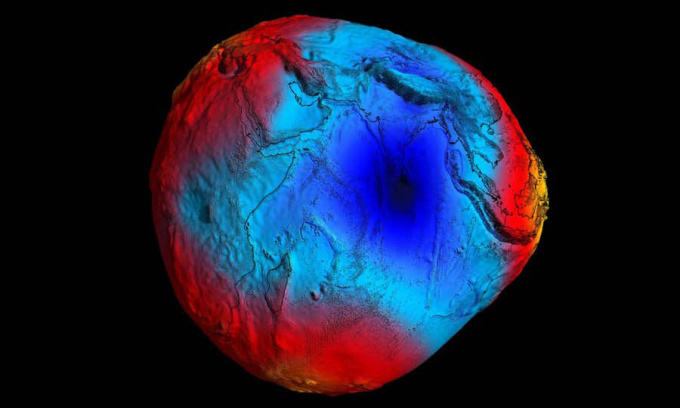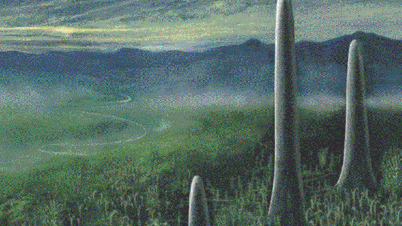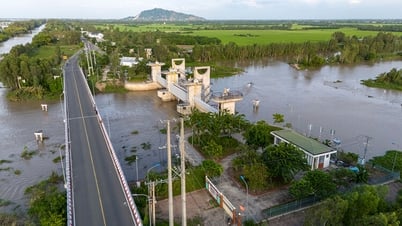India Experts have found a possible cause for the 3 million square kilometer gravity hole, where gravity is particularly weak, to form in the Indian Ocean.

Map showing where gravity is weak (green) and strong (red) on Earth. Image: ESA/HPF/DLR
Deep beneath the Indian Ocean lies a giant gravity well measuring about 3 million square kilometers that has puzzled scientists for decades. Technically, it’s not a hole in the traditional sense. But geophysicists use the term to describe an area where gravity is much lower than average.
The Earth is not a perfect sphere, with flat poles and bulges along the equator, so gravity varies depending on location. Scientists have mapped these effects to create the Earth's "geoid" - a potato-shaped map that visually represents these valleys and troughs of gravity. One of these, called the Indian Ocean Geoid Low (IOGL), has attracted the attention of researchers since its discovery in 1948.
In a new study published in the journal Geophysical Research Letters , geoscientist Attreyee Ghosh and graduate student Debanjan Pal at the Indian Institute of Science looked at IOGL and found that the sea level of the surrounding ocean is nearly 107 meters lower than the global average, Futurism reported on July 1.
After running numerous computer models of how the region has changed over the past 140 million years, the team concluded that the IOGL could be the result of the “African mass” – a giant mass of material in the Earth’s mantle, located more than 600 miles below Africa – being pushed down into the Indian Ocean.
Geologists believe the mass formed from the seafloor remains of the ancient Tethys Ocean that lay between the supercontinents Laurasia and Gondwana more than 200 million years ago. Then, about 120 million years ago, the Indian Ocean formed as Gondwana moved northward, entering the ancient ocean.
According to Pal and Ghosh, IOGL may have taken its current shape about 20 million years ago, when hot, dilute magma flows surrounded the area, and the Tethys oceanic plates sank into the Earth's mantle.
However, according to Himangshu Paul, an expert at India's National Geophysical Research Institute, there may be other factors behind the existence of IOGL. "Simulations will not be able to mimic nature exactly," he said.
Thu Thao (According to Futurism )
Source link


![[Photo] Wandering through dreams](https://vphoto.vietnam.vn/thumb/1200x675/vietnam/resource/IMAGE/2025/6/24/5eacd7c04f86495cbff912448fa6e934)

![[Photo] Prime Minister Pham Minh Chinh holds meeting to launch exhibition of national achievements to celebrate 80th National Day](https://vphoto.vietnam.vn/thumb/1200x675/vietnam/resource/IMAGE/2025/6/23/0c0c37481bc64a9ab31b887dcff81e40)


![[Photo] Prime Minister Pham Minh Chinh chairs the national online conference on combating smuggling, production and trade of counterfeit goods.](https://vphoto.vietnam.vn/thumb/1200x675/vietnam/resource/IMAGE/2025/6/23/4a682a11bb5c47d5ba84d8c5037df029)






































































































Comment (0)